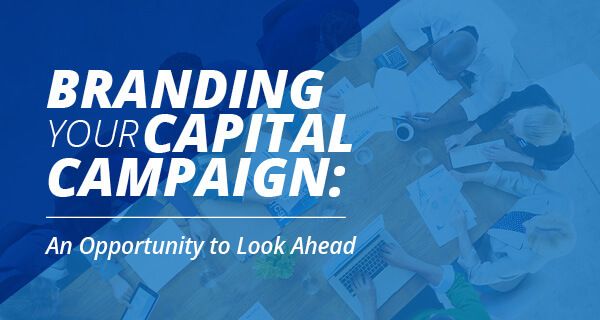If you are heading into a capital campaign, it’s a great time to think about your organization’s brand. Capital campaigns usually come at times when an organization is looking into the future and planning the next stage of its growth.
While you are doing that planning, you’ve got a wonderful opportunity to look with clear eyes at the current state of your organization as reflected in your brand. A brand is much more than a logo or color palette. It’s a statement of who you are expressed in multiple ways and forms that can help you better engage your community.
The capital campaign will provide you with an opportunity to create a new, interim brand that helps move your organization forward.
Start by evaluating your current brand.
Does it reflect who you are? Does it capture the spirit and culture that is true to your organization’s DNA? Is your brand aligned with your mission and values?
Keep in mind that your brand is far more than a logo. It’s an entire identity that has been created, wittingly or unwittingly, through a complex set of communications including visual and verbal, and even behavioral practices both on-the-ground and online.
When your brand aligns with your mission and values, people will recognize not only a color or a mark, but they will recognize the essence and character of your organization.
An Opportunity to Create a Forward-Looking Brand
Many organizations start capital campaigns following a period of intense organizational planning. The plans point a way forward to what the organization wants to become. They highlight what an organization will have to do to have an even greater impact on the community they serve. The plans are often ambitious and even breathtaking. And the plans set the path
for a capital campaign to raise the funds necessary for the new level of operation.
For many organizations, capital campaigns occur only every 15 or 20 years and they signify a big leap forward. So, your organization’s current brand, developed during times of
relative stability, may not capture the spirit of the organization you are going to become.
Distinct Branding for Your Campaign
Capital campaigns often extend 3 to 5 years. You might have two to three years of active fundraising and then another two or three years during which you collect the pledges made during the campaign.
If your capital campaign will fund a building or other capital improvements, construction is likely to take place during that extended campaign period. But once the money has been raised, collected, and spent on the necessary improvements, the campaign will be over.
That campaign period provides a remarkable opportunity to develop a new and distinct brand that captures the spirit of growth and excitement the organization is going through.
Often campaign brands are quite distinct from the organization’s regular brand. Campaign colors and logos may be used in concert with the organization’s standard branding to maintain some continuity and recognition. But the focus and energy may be quite different.
Campaign Titles and Themes
Take, for example, the title and theme of your campaign. Most campaigns adopt specific themes that are used throughout the campaign period. Many of them point forward with names like “Building Toward a Better Future” or “Hope for Tomorrow” or “Fulfilling the Promise.”
Campaigns often use a tagline to the broad theme to capture the specifics of the project. Here are some examples of campaign themes with associated taglines:
- FULFILLING THE PROMISE. Great healthcare close to home
- OUR CHILDREN, OUR FUTURE. A campaign to inspire a lifelong love of science
- SETTING THE STAGE for GREATNESS. A new home for the performing arts
These examples, however, are just words—a good campaign brand will place that verbal expression in a graphic setting that will capture the energy and spirit of the campaign. The brand will be conveyed through every aspect of the campaign. It will permeate all of the materials, brochures or mailers, press releases, slide decks, reports, campaign swag, advertising, and other digital materials or microsites created for the campaign.
The distinctive branding for the campaign will signal to the organization’s leadership, the
donors, and the community that the organization is taking an exciting leap forward.
What Happens to the Brand When the Campaign is Over?
As the campaign draws to a close the organization has a decision to make. You can either revert to the original brand, or you can use the completion of the campaign as an opportunity to re-envision or update the brand, perhaps incorporating some of the elements you used in the campaign branding with a more stable brand designed to persist over time.
The process of developing a brand provides excellent opportunities to talk to your key stakeholders about your organization like back at the start of your campaign’s feasibility study. And for many organizations, the conclusion of a campaign is an excellent time to do that.
Through the campaign period, you will have strengthened many old relationships and created many new ones. Once the campaign is over, you should look for opportunities to build on those relationships rather than letting them drift off.
Developing a new, updated brand for your organization might be just the right thing to draw those donors close.
Learn more about campaign branding and marketing by listening to our interview with Sarah Durham, founder of Big Duck, a leading nonprofit communications agency.
Amy Eisenstein, ACFRE, and Andrea Kihlstedt are co-founders of the Capital Campaign Toolkit, a virtual support system for nonprofit leaders running successful campaigns. The Toolkit provides all the tools, templates, and guidance you need — without breaking the bank.
